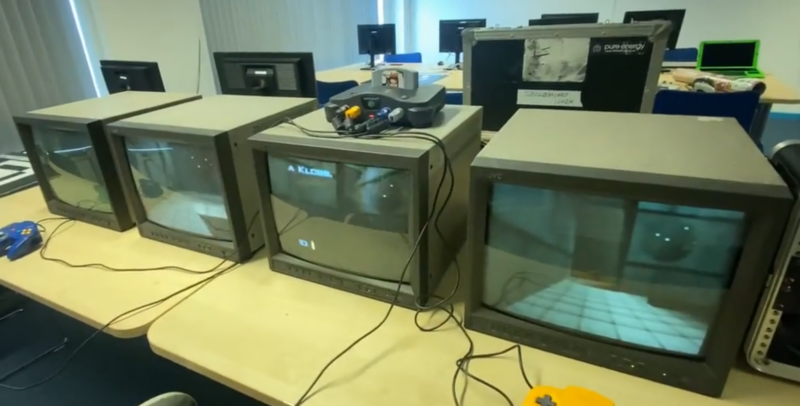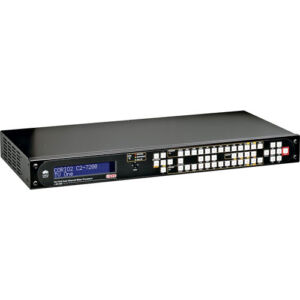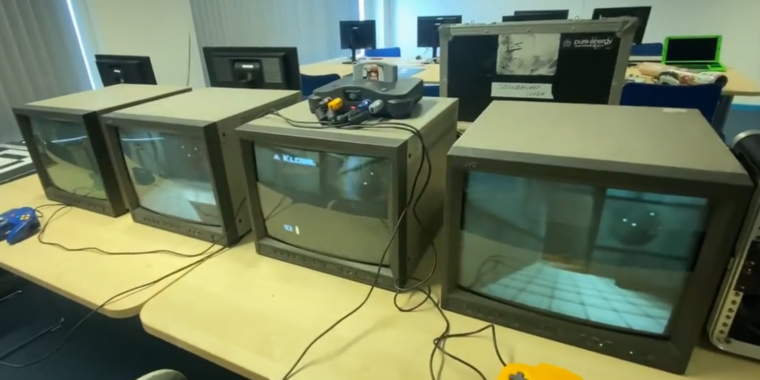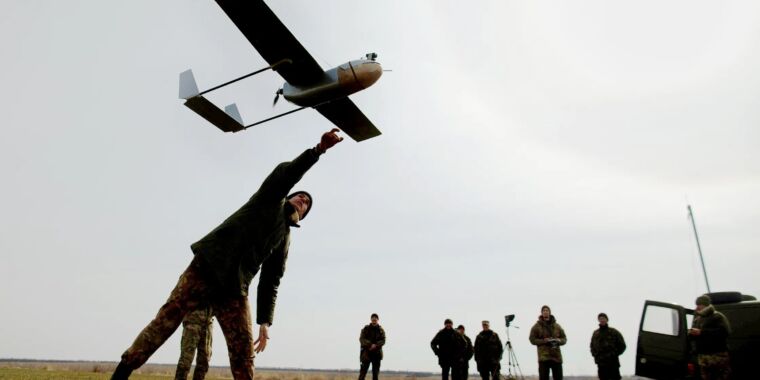
Anyone who remembers playing GoldenEye 007 on the N64 likely remembers having to account for the “screencheaters” that would glance at another quadrant of the split-screen shooter to gauge an opponent’s locations. There’s even a modern game that forces players to rely on the tactic to track invisible opponents.
Now, 25 years after GoldenEye‘s launch, a museum has managed to do something about those screencheaters, rigging up a way to split a game of GoldenEye across four TV screens without modifying the original cartridge or N64 hardware.
4 screen GoldenEye on the original N64 hardware! No screencheating here! …but how?
Come and experience this at our GoldenEye evening, celebrating 25 years of GoldenEye for Nintendo 64: https://t.co/F918hEQ20v pic.twitter.com/05jA82upb8— Computing History (@computermuseum) May 4, 2022
The multi-screen GoldenEye gameplay will be featured as part of the “25 Years of GoldenEye” event at Cambridge, England’s Centre for Computing History this weekend. A proof of concept for the unique playstyle (with all the monitors awkwardly facing the same direction) attracted some attention via a tweet Wednesday, leading Ars to reach out for more details on how the museum pulled it off.
“It’s not elegant”

Centre for Computing History CEO and trustee Jason Fitzpatrick tells Ars the idea for multi-screen GoldenEye started when some employees at the museum were discussing their particular frustrations with split-screen first-person shooters on consoles. “We were talking about it and they said, ‘The trouble is being all on the same screen; you just look to the top right and see what they’re doing, and you can counter it,'” Fitzpatrick said. “And we went, ‘Oh, actually, we might have a way around that.’ So we just messed around and tried it and thought it was just a bit of fun.”
Fitzpatrick was in a good position to split up GoldenEye‘s split-screen signal because of his day job at Pure Energy TV and Film Props, where he says he’s often called on to set up old cathode ray tube TVs on set. That means he “happens to have a number of bits of equipment for messing around with video,” he said.
In this case, the key “bit of equipment” is a C2-7210 video scaler, a defunct piece of video production tech that lets professionals process a live video signal in a wide variety of ways. That includes the ability to zoom in on a specific portion of up to two input signals and then upscale the result to a full-screen output on another monitor or TV.
For multi-screen GoldenEye, Fitzpatrick said he simply split the standard PAL N64 signal into four identical copies, then fed two inputs each into two scaler units. After that, you point each scaler at a different quadrant of the input signal and send the resulting output to different TVs. A second input on one of those TVs also receives the unmodified full-screen signal directly from the N64 to make it easier to navigate menus.
“It’s not elegant in that basically you’re taking a 704×576 [pixel] image, and you’re just zooming into a quarter of it and then taking that quarter and stretching it across a full screen,” Fitzpatrick told Ars. “Even though we’re dealing with something around 352×288 [pixels], give or take, as a resolution for each one of those quadrants, by the time it’s pulled up to full screen it looks all right.”
That’s partly because “the original game didn’t look great anyway” and because the continuous horizontal line-scanning tech of the CRT “covers up a multitude of sins,” Fitzpatrick said. “Old video CDs were 352×288 anyway, so we used to watch films at that resolution,” he added.
This kind of signal splitting may bring to mind the massive CRT video walls that you sometimes see in art installations or old music videos. But Fitzpatrick says using a video wall controller for this kind of processing “would take hours to set up because you’d have to do each one individually… you wouldn’t have had the fine control over going exactly into that [split-screen] area. That would have just took the screen and cut it into four. It might have missed some bits and pieces.”








